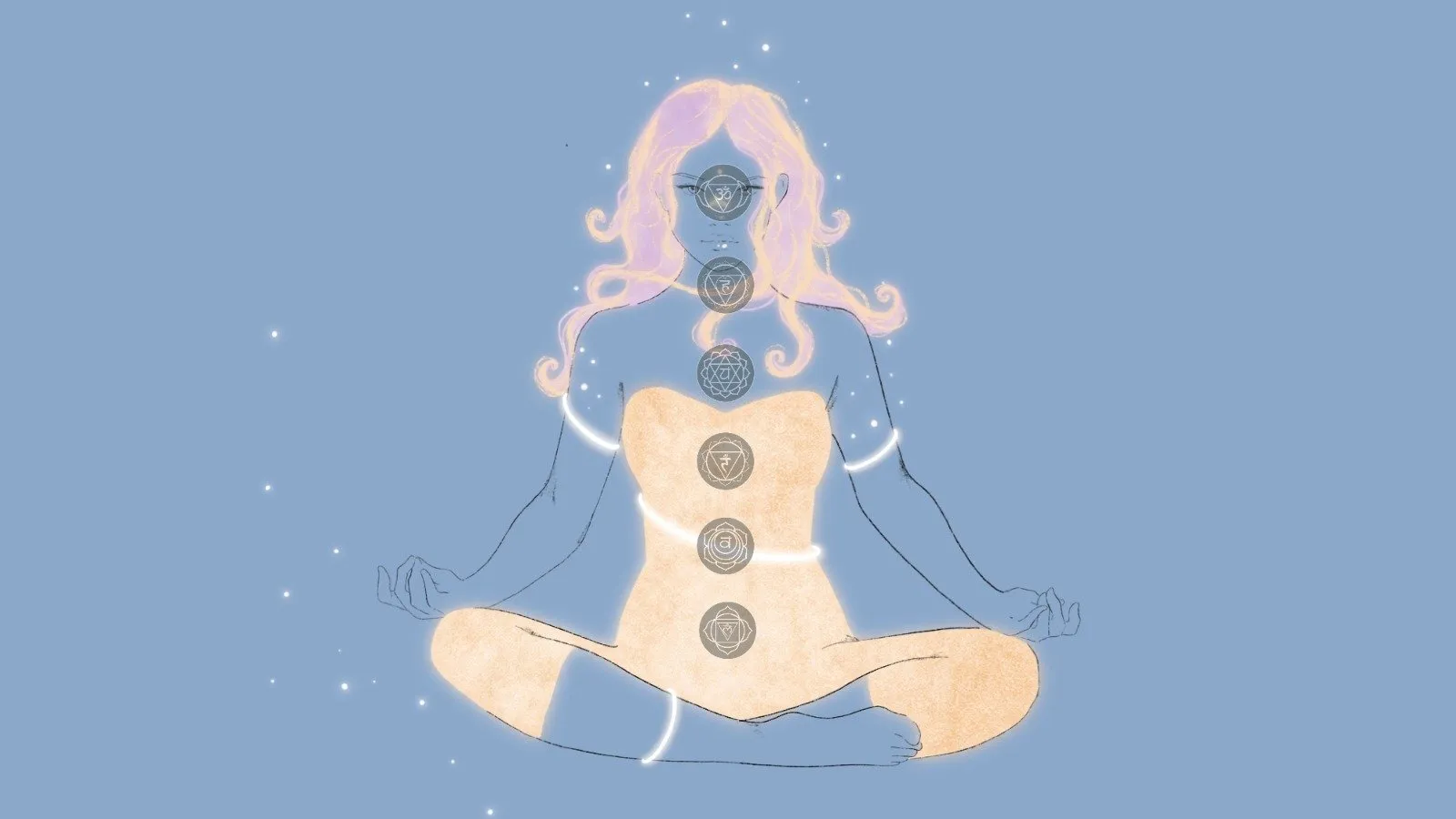
What Are The Chakras? The Chakra System Explained
If you’ve been practicing yoga for a while now, you’ve likely come across the chakras. You might know they have something to do with the
We’re Turning 5 – Celebrate With an EXTRA 15% OFF!
✨ Use code: PPB5YEARS at checkout
⏳ Offer ends Sunday at midnight – no extensions
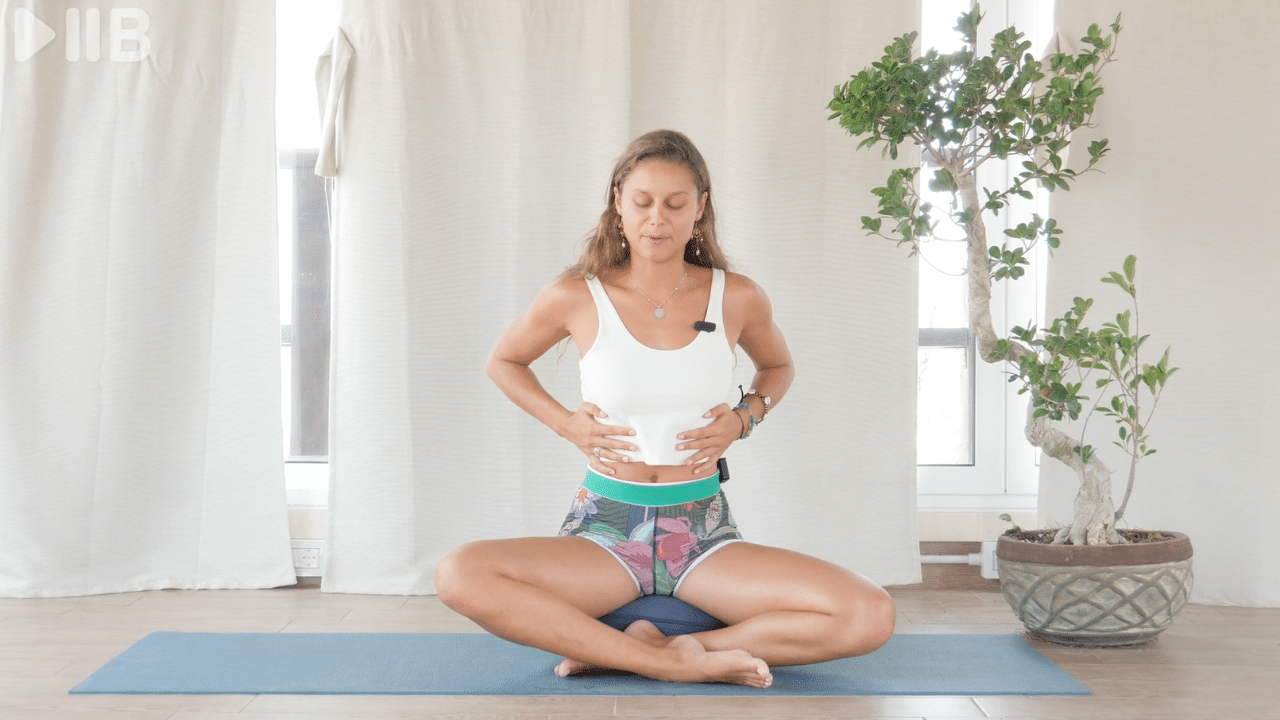
You don’t have to go to many yoga classes or watch many online tutorials to know that breathing is a vital part of yoga practice.
But why do yoga instructors remind you to breathe and cue your inhale and exhale so much?
In this article, we’ll explore the importance of breath awareness and how you should breathe when performing asanas.
Connecting to your breath during yoga has numerous benefits for your body and mind. Physically, it can improve your posture and reduce joint compression.
Mentally, it can calm the mind and increase your focus. This is because when we focus on breathing, we shift from the brainstem to the cerebral cortex, which plays a crucial role in attention, perception, and awareness.
Breath connection also helps us maintain our balance, which is why yoga teachers cue you to focus on breathing while holding a balancing posture like Tree Pose or Warrior 3.
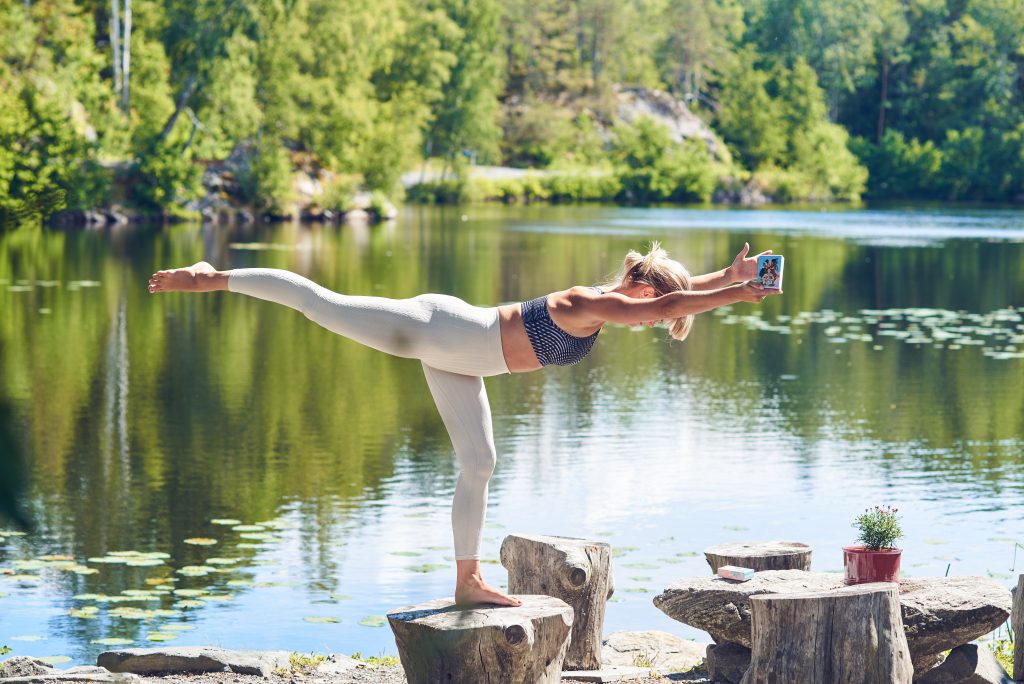
The more you focus on your breathing, the more self-awareness you build. Yoga shows us how our breath indicates how our body feels each moment.
For example, our breath is slow and steady when our body is relaxed during a stretch. However, when there is pain or extreme tension, the breath becomes more rapid, signaling that we are over-stretching and need to release slightly out of the pose.
A change in our mind can also alter our breathing rate. For example, a disturbing or anxious thought can cause a sudden and immediate difference in our breathing pattern, making it shorter and more restricted. Likewise, positive thoughts, such as thinking about someone we love, will naturally trigger a slower breathing rate.
Breath connection also has positive effects on our emotional and energetic bodies. For example, slow, deep breaths can help you get out of a stressful or anxious state and cultivate a sense of calm and ease. This is because conscious breathing improves the movement of prana (life force) throughout our body, breaking up emotional blockages and stagnation.
Thus, if you are consumed by emotional stress, a yoga practice with breath awareness will help you see things more clearly. Essentially, it gives your whole system a break from the stressors you experienced throughout the day. This explains why so many yogis enter a yoga class feeling stressed and tired but leave it feeling calm and revitalized.
Firstly, unlike most fitness exercises and sports, in yoga, you should breathe through the nose rather than the mouth.
Then, you should ensure you use your entire lung capacity. So when you inhale, draw the breath up from your belly to your ribcage to your chest. Then, as you exhale, send your breath back down to your stomach. This long, deep breathing style increases oxygen intake, reducing the likelihood of feeling fatigued or “out of breath” during your practice.
For a visual explanation of how to breathe correctly during yoga, check out this Youtube Video.
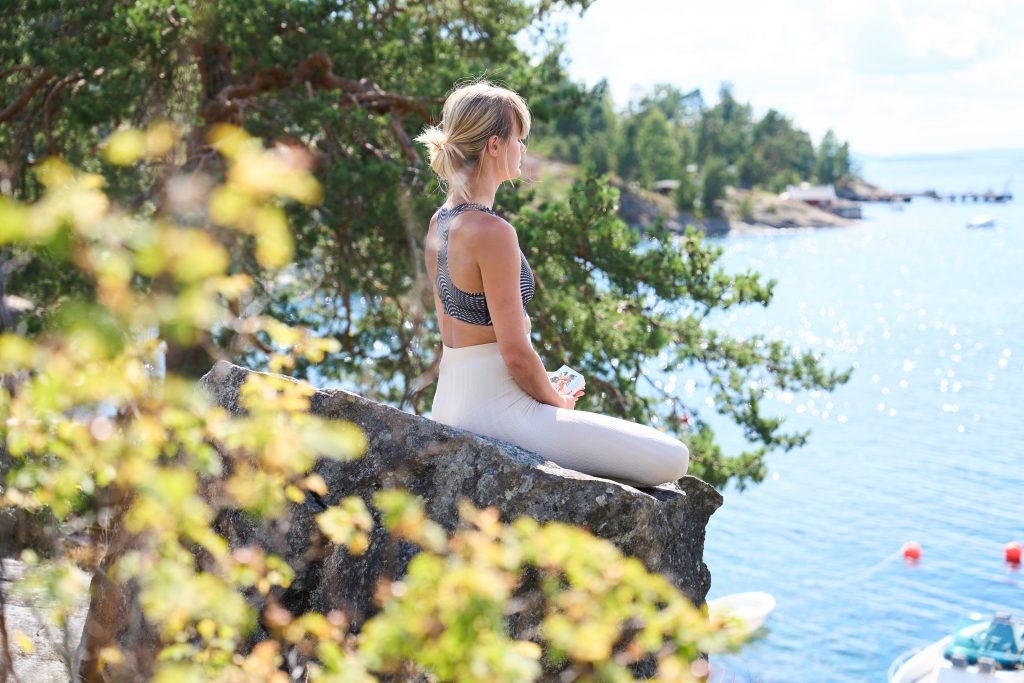
Along with maintaining the 3-part breathing described above, you should aim to connect your breath to the asanas. The key here is to allow the breath to control the movement, not the other way around.
Move to the pace of your breath, adjusting the speed of your movement as needed. For example, if your breath starts to quicken or become more shallow, this is a sign that you are moving too fast and need to slow down.
Also, note that pausing in Child’s Pose or Downward Dog is fine whenever you lose connection to your breath or breathing becomes more difficult. You should never feel out of breath during yoga practice, so if you notice this happening, stop and take a break.
When taking a pause to regulate your breathing, take a few deep cleansing breaths by inhaling through your nose and exhaling through your mouth. Although you should generally breathe through the nose in yoga, if you start to feel exhausted, a few open-mouth exhales can help the carbon dioxide leave your system quicker. Do this a few times, then return to your regular yogic breathing.
Aside from the breathing style described above, other yogic breathing techniques can be helpful to implement during different parts of your practice. These breathing techniques are known as pranayamas, a Sanskrit word meaning “to gain control of life force/breath.”
Each pranayama has a unique benefit; some are energizing and build internal heat to help you move through challenging asanas, while others are more calming and serve as a meditation tool at the end of your practice.
One of the most commonly used pranayamas is the Ujjayi breath. So let’s explore when you should use it and how to perform it.

Ujjayi breathing comes from the Ashtanga lineage and is most commonly used in strenuous yoga styles like Ashtanga and Vinyasa. It is a heating, energizing breath, yet it can also feel highly calming as it focuses your mind on your movements.
Ujjayi is a diaphragmatic breath where you inhale and exhale through the nose. However, unlike normal breathing, you slightly constrict the throat as you exhale, creating a sound like the ocean (or, as some yoga instructors describe it, like Darth Vader from Star Wars).
This style of breathing helps you maintain rhythm when flowing between asanas while building energy to prevent feelings of fatigue. It can also help clear toxins out of the body.
Ujjayi is one of the breathing techniques taught in the PlayPauseBreathe online course. This comprehensive course not only teaches you the most common pranayama techniques and when to apply them. It also explains in depth how to use your breath correctly when practicing yoga to maximize your performance and the benefits you receive.
Many of us have bad breathing habits that we don’t know about. PlayPauseBreathe will help you recognize and fix them, allowing you to improve your breathing range and use your full lung capacity. This, in turn, will boost and balance your energy levels while nourishing every cell of your body with rich oxygen.
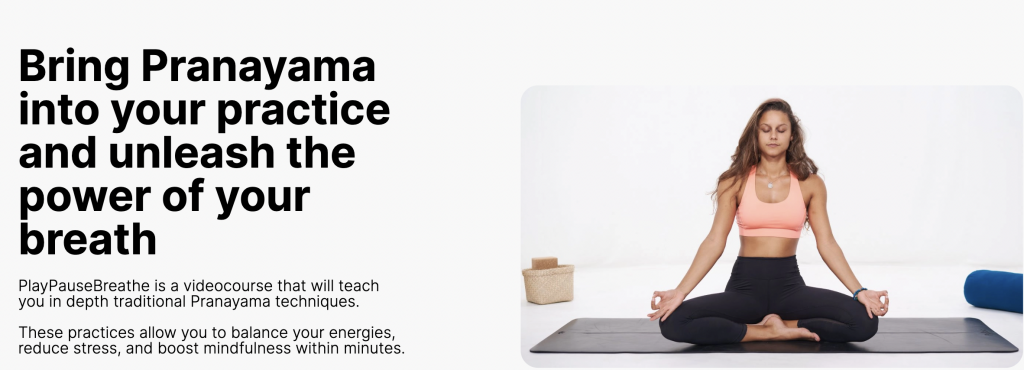

If you’ve been practicing yoga for a while now, you’ve likely come across the chakras. You might know they have something to do with the
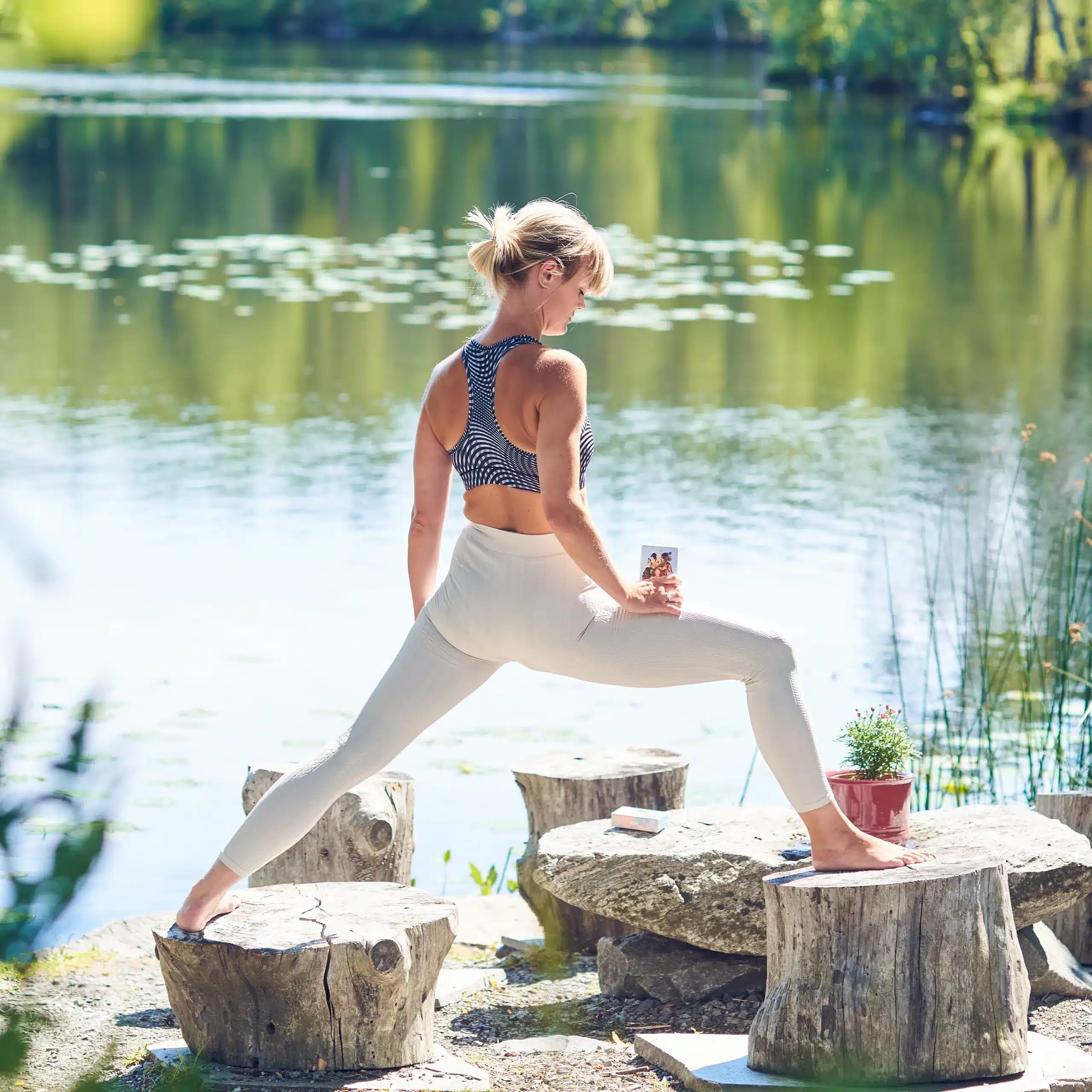
So you’ve heard all about the incredible benefits of yoga and are ready to give it a go? Awesome! However, before you attend your first

Lung health is not only crucial for smokers and people with existing respiratory problems. Our lungs provide vital oxygen to all our body’s organs and,

Celebrate With an EXTRA 15% Off
Enjoy an extra 15% OFF everything – decks, bundles, and courses.
✨Use code: PPB5YEARS at checkout
Offer ends Sunday at midnight – no extensions!